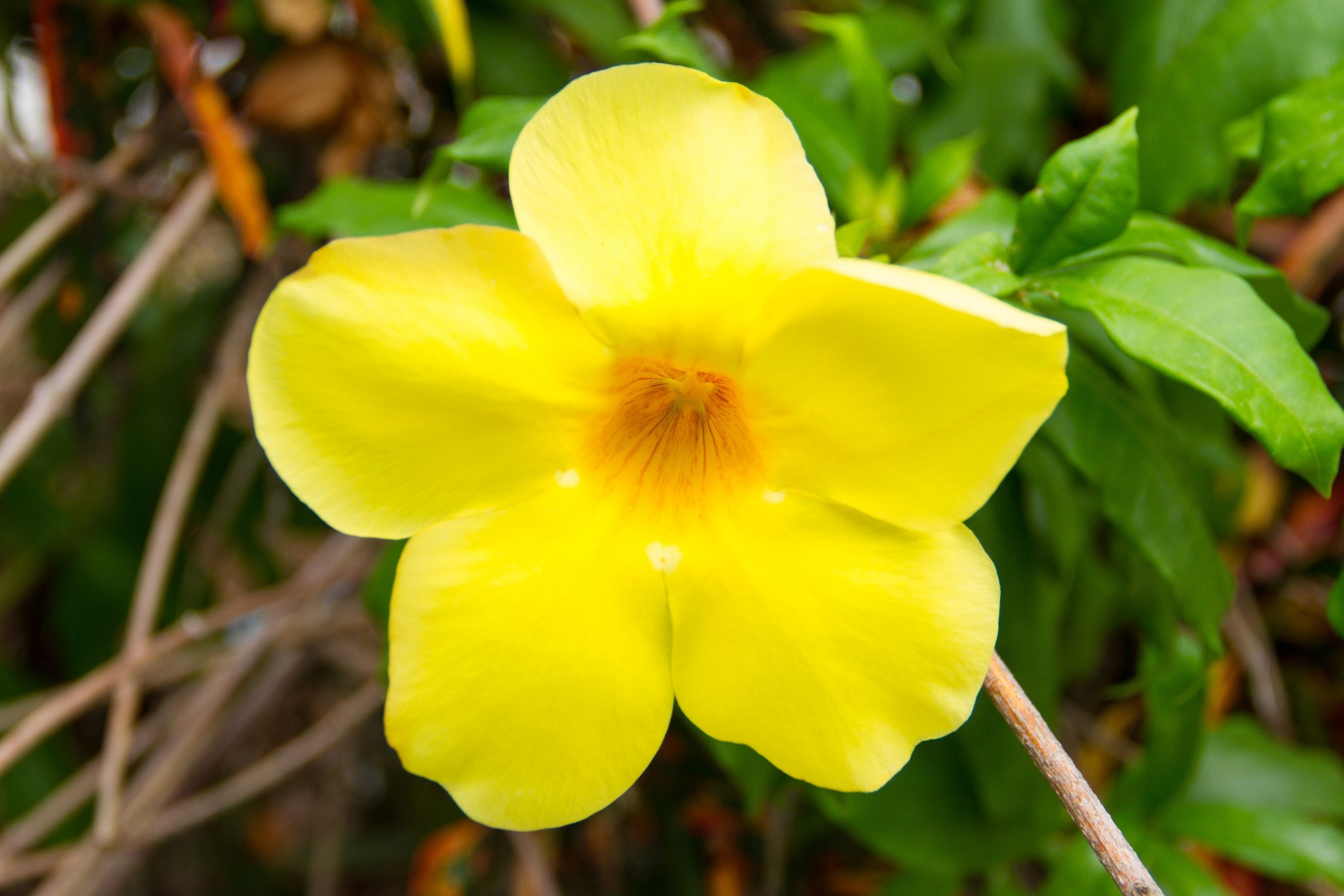Golden Trumpet
(Allamanda cathartica)

Description
Allamanda cathartica, commonly known as Golden Trumpet or Yellow Bell, is a perennial flowering plant that belongs to the Apocynaceae family. This plant is native to South and Central America but is widely cultivated in many parts of the world as an ornamental plant. The plant is a fast-growing climber and can reach a height of up to 6 meters if given the right growing conditions. This article provides an in-depth analysis of the Allamanda cathartica plant, including its characteristics, growing conditions, propagation, and uses. Taxonomy Allamanda cathartica belongs to the Apocynaceae family, which includes a range of plants such as Vinca, Oleander, and Frangipani. The genus Allamanda consists of about 12 species, all of which are native to South and Central America. The species name cathartica is derived from the Greek word "kathartikos," which means cleansing or purgative, referring to the plant's medicinal properties. Characteristics The Allamanda cathartica plant has a woody stem, which is covered with green, glossy leaves that are elliptical in shape and arranged in an opposite pattern. The leaves are typically 10 to 20 cm long and 4 to 8 cm wide. The plant produces large, showy flowers, which are trumpet-shaped and can be up to 12 cm in diameter. The flowers are bright yellow in color and have a sweet fragrance. The fruit of the plant is a follicle, which splits open when ripe to release numerous small, brown seeds. Growing Conditions Allamanda cathartica is a tropical plant that requires warm temperatures and high humidity to grow. The plant thrives in full sun but can also tolerate partial shade. The soil should be well-drained and rich in organic matter. The plant prefers slightly acidic soil with a pH range of 5.5 to 6.5. Watering and Fertilization Allamanda cathartica requires regular watering, especially during the growing season. The soil should be kept moist but not waterlogged. Overwatering can lead to root rot and other diseases. The plant also requires regular fertilization with a balanced fertilizer to promote healthy growth and flowering. Pruning Allamanda cathartica is a fast-growing plant that can quickly become unruly if not pruned regularly. Pruning should be done after the plant has finished flowering. The plant can be pruned to control its size and shape, and to remove any dead or damaged branches. Propagation Allamanda cathartica can be propagated by seeds or cuttings. Seeds should be planted in well-draining soil and kept moist until germination, which can take up to 4 weeks. Cuttings should be taken from new growth in the spring or early summer and should be planted in well-draining soil. Uses Allamanda cathartica is mainly cultivated as an ornamental plant because of its showy flowers. The plant is also used in traditional medicine to treat various ailments, including constipation, fever, and rheumatism. The leaves and stems of the plant are used to make a tea, which is believed to have laxative and diuretic properties. However, it is important to note that the plant is toxic and should be used with caution. Conclusion Allamanda cathartica is a beautiful and easy-to-grow plant that can add color and interest to any garden. Its large, showy flowers and glossy leaves make it a popular choice for gardens, parks, and public spaces. The plant's medicinal properties have also made it a valuable resource in traditional medicine.
Taxonomic tree:







